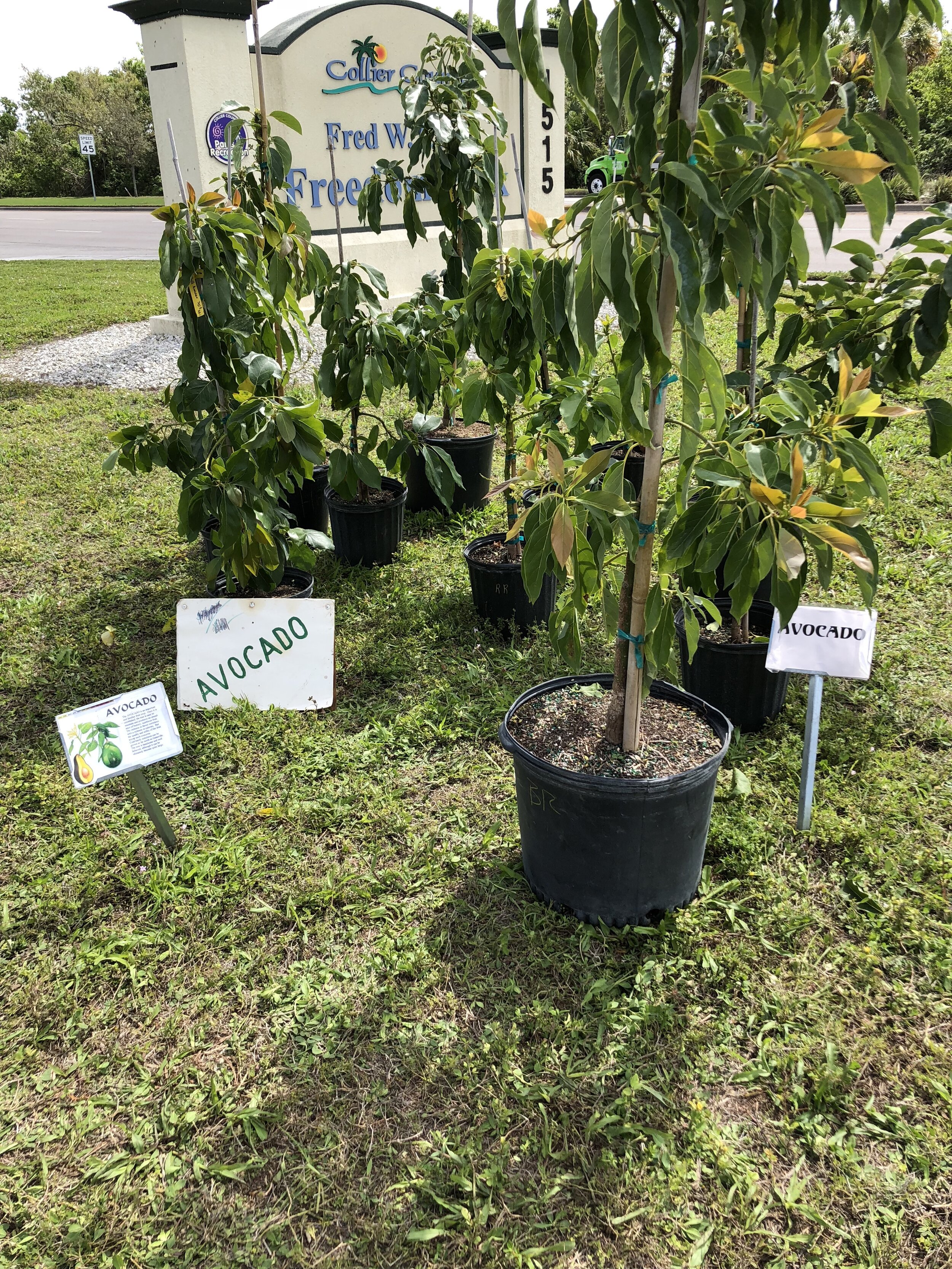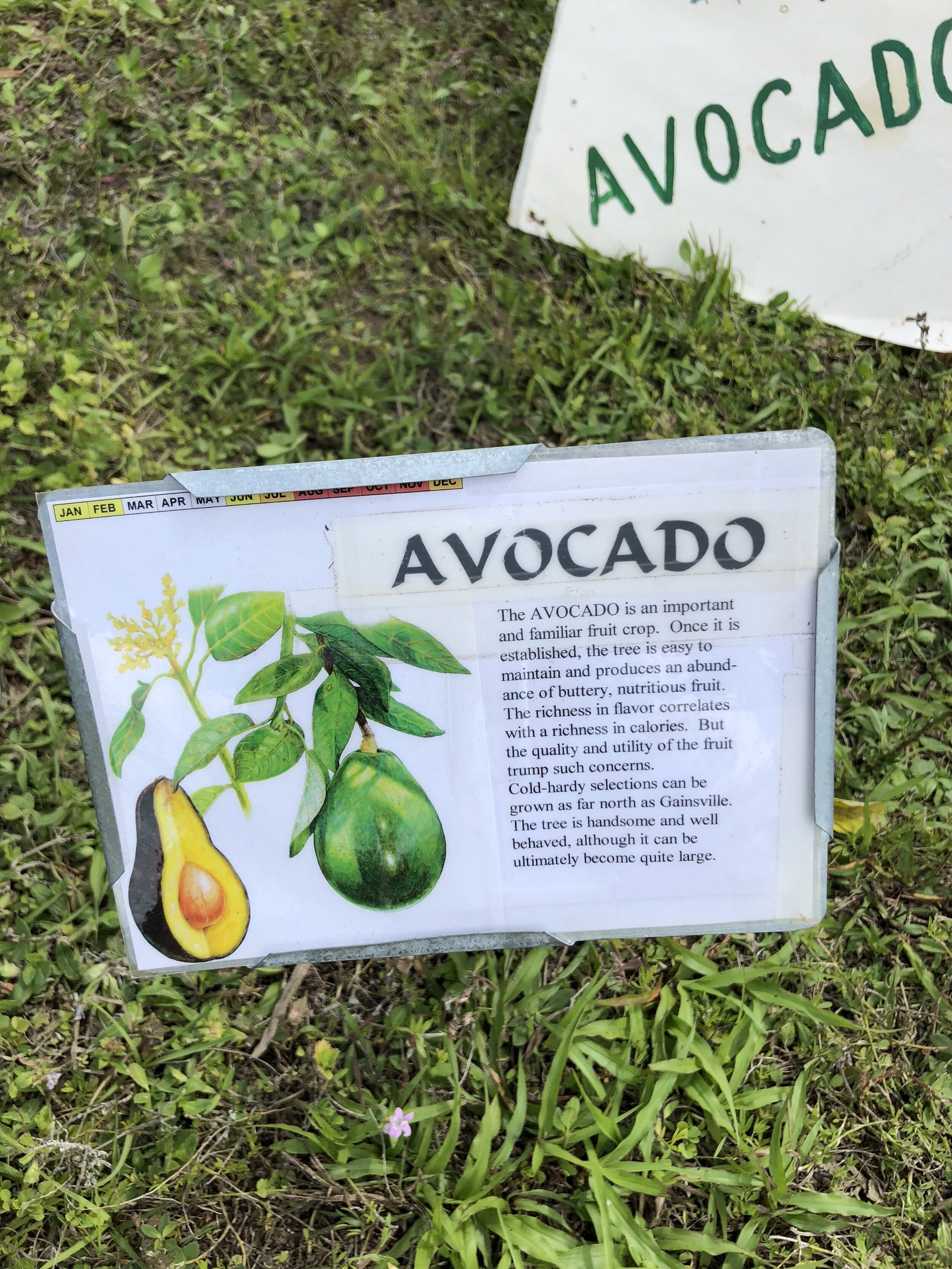Avocado Trees
The Avocado is not your typical fruit because it eats like a vegetable. In Florida, it is often called the Alligator Pear because of the fruit’s shape and rough textured skin. All Avocados are self pollinating with the male and female flowers occurring on the same tree. The best varieties for the home gardener are: Choquette, Simmonds and Miguel.
Climate
West Indian and some hybrid varieties are best adapted to a lowland tropical climate and relatively frost-free areas of the subtropics. Mexican varieties are more cold-tolerant and not well-adapted to lowland tropical conditions. Guatemalan x Mexican hybrids are generally more cold-tolerant than West Indian x Guatemalan hybrid varieties.
In general, avocados should be planted in the warmest areas of the State, i.e., along the southeast and southwest coasts of Florida. West Indian and some hybrid types are the least cold tolerant and do best only in areas that rarely experience freezing temperatures.
Soil
Avocado trees do not tolerate flooding or poorly drained soils but are adapted to many types of well-drained soils. Continuously wet or flooded conditions often result in decreased growth and yields, nutrient deficiency symptoms, dieback, and sometimes tree death. Under these conditions, trees are highly susceptible to root infection by Phytophthora fungi.
Trees grow well and produce satisfactory yields in the sandy and limestone soils of Florida if not subjected to flooding or poor drainage. In the home landscape, select an area that does not flood. If there is a potential for excessively wet or flooded soil conditions plant on a large hill or mound made up of native soil, 2 to 4 ft high (0.6 to 1.2 m) by 4 to 6 ft diameter (1.2 to 1.8 m).
Site Selection
In general, avocado trees should be planted in full sun for best growth and fruit production. Select a part of the landscape away from other trees, buildings and structures and powerlines. Remember avocado trees can become very large if not pruned to contain their size. Select the warmest area of the landscape that does not flood (or remain wet) after typical summer rainfall events.
Water
Newly planted avocado trees should be watered at planting and every other day for the first week or so and then 1 to 2 times a week for the first couple of months. During prolonged dry periods (e.g., 5 or more days of little to no rainfall) newly planted and young avocado trees (first 3 years) should be well watered twice a week. Once the rainy season arrives, irrigation frequency may be reduced or stopped.
Once avocado trees are 4 or more years old, irrigation will be beneficial to plant growth and crop yields during prolonged dry periods. The specific water requirements for mature trees have not been determined. However, as with other tree crops, the period from bloom and through fruit development is important and drought stress should be avoided at this time with periodic watering.
Ripening
Avocados do not ripen on the tree, so you only need to harvest what you need. The rest can remain on the tree. Mature fruit ripens in about 3 to 8 days once it is removed from the tree.









